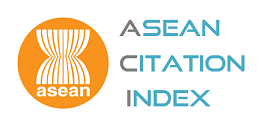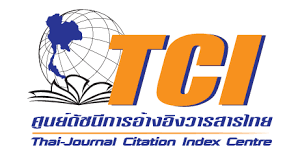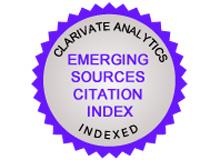Effects of a Cardiac Rehabilitation Program on Perceived Self-Efficacy and Physical Fitness among Thais with Coronary Artery Bypass Graft: A Quasi-Experimental Study.
DOI:
https://doi.org/10.60099/prijnr.2025.271551Keywords:
Cardiac rehabilitation program, Coronary artery bypass graft, Perceived self-efficacy, Physical fitness, Post-coronaryAbstract
Cardiac rehabilitation is vital for people following cardiac surgery. Despite the proven benefits of cardiac rehabilitation, there is limited research integrating self-efficacy theory into cardiac rehabilitation programs. This quasi-experimental study aimed to evaluate the effects of such a program on perceived self-efficacy and physical fitness among Thais post-coronary artery bypass graft surgery. The sample comprised 40 participants. Firstly, the experiment group (n = 20) was recruited according to the criteria and participated in a clinical phase of the program. Then, the control group (n = 20,) who received only usual care, were recruited and followed up till the day of discharge, the same as the experimental group. Instruments for data collection were the Perceived Self-Efficacy Questionnaire; physical fitness was measured via the Six-minute Walk Test and maximal oxygen consumption. The data were analyzed using descriptive statistics, chi-square, and independent t-test.
The results showed that on the day of hospital discharge, the participants in the experimental group had perceived self-efficacy and physical fitness (the six-minute walk distance and the maximum oxygen consumption rate) significantly higher than the control group. These findings indicate that the Cardiac Rehabilitation Program effectively enhances perceived self-efficacy and physical fitness among Thais with post-coronary artery bypass graft surgery. Nurses can use this program in clinical practice among people with post-coronary artery bypass graft surgery. However, further testing with multi-settings, long-term follow-up, and the use of eHealth is required before it can be widely used.
References
Roth GA, Johnson C, Abajobir A, Abd-Allah F, Abera SF, Abyu G, et al. Global, Regional, and National Burden of Cardiovascular Diseases for 10 Causes, 1990 to 2015. Journal of the American College of Cardiology. 2017;70(1):1-25. doi: 10.1016/j.jacc.2017.04.052. DOI: https://doi.org/10.1016/j.jacc.2017.04.052
World Heart Federation. World Heart Report 2023 [Available from: https://www.world-heart-federation.org/resource/world-heart-report-2023/
World Health Organization. The top 10 causes of death 2024 [Available from: https://www.who.int/news-room/fact-sheets/detail/the-top-10-causes-of-death
Division of Non-Communicable Diseases. Number and mortality rate, noncommunicable diseases year 2018-2022 Ministry of Public Health Thailand: Ministry of Public Health Thailand; 2024 [Available from: https://www.ddc.moph.go.th/dncd/news.php?news=39911
Dimeling G, Bakaeen L, Khatri J, Bakaeen FG. CABG: When, why, and how? Cleveland Clinic Journal of Medicine. 2021;88(5):295-303. doi:10.3949/ccjm.88a.20115. DOI: https://doi.org/10.3949/ccjm.88a.20115
Ghandakly EC, Iacona GM, Bakaeen FG. Coronary artery surgery: Past, present, and future. Rambam Maimonides Med J. 2024;15(1):1-16. doi: 10.5041/RMMJ.10515. DOI: https://doi.org/10.5041/RMMJ.10515
The Society of Thoracic Surgeons of Thailand. Heart Surgery Statistics in Thailand in 2023, 2024 [Available from: https://www.thaists.or.th/.
McNichols B, Spratt JR, George J, Rizzi S, Manning EW, Park K. Coronary artery bypass: Review of surgical techniques and impact on long-term revascularization outcomes. Cardiology and Therapy. 2021;10(1):89-109. doi: 10.1007/s40119-021-00211-z. DOI: https://doi.org/10.1007/s40119-021-00211-z
Jawitz OK, Gulack BC, Brennan JM, Thibault DP, Wang A, O'Brien SM, et al. Association of postoperative complications and outcomes following coronary artery bypass grafting. American Heart Journal. 2020;222:220-8. doi:10.1016/j.ahj.2020.02.002. DOI: https://doi.org/10.1016/j.ahj.2020.02.002
Montrief T, Koyfman A, Long B. Coronary artery bypass graft surgery complications: A review for emergency clinicians. The American Journal of Emergency Medicine. 2018;36(12):2289-97. doi: 10.1016/j.ajem.2018.09.014. DOI: https://doi.org/10.1016/j.ajem.2018.09.014
Taylor RS, Dalal HM, McDonagh STJ. The role of cardiac rehabilitation in improving cardiovascular outcomes. Nature Reviews Cardiology. 2022;19(3):180-94. doi: 10.1038/s41569-021-00611-7. DOI: https://doi.org/10.1038/s41569-021-00611-7
Miao J, Yang H, Shi R, Wang C. The effect of cardiac rehabilitation on cardiopulmonary function after coronary artery bypass grafting: A systematic review and meta-analysis. iScience. 2023;26(12):107861. doi:10.1016/j.isci.2023.107861. DOI: https://doi.org/10.1016/j.isci.2023.107861
Shan R, Zhang L, Zhu Y, Ben L, Xin Y, Wang F, et al. Effect of Early Exercise Rehabilitation on Cardiopulmonary Function and Quality of Life in Patients after Coronary Artery Bypass Grafting. Contrast Media & Molecular Imaging. 2022;2022. doi: 10.1155/2022/4590037. DOI: https://doi.org/10.1155/2022/4590037
Sérvio, Thaianne Cavalcante, et al. Barriers to cardiac rehabilitation delivery in a low-resource setting from the perspective of healthcare administrators, rehabilitation providers, and cardiac patients. BMC health services research, 2019, 19: 615. doi: 10.1186/s12913-019-4463-9. DOI: https://doi.org/10.1186/s12913-019-4463-9
Thomas, Randal J. Cardiac Rehabilitation—challenges, advances, and the Road ahead. New England Journal of Medicine, 2024, 390.9: 830-841. doi: 10.1056/NEJMra2302291. DOI: https://doi.org/10.1056/NEJMra2302291
Walters R, Leslie SJ, Sixsmith J, Gorely T. Health Literacy for Cardiac Rehabilitation: An Examination of Associated Illness Perceptions, Self-Efficacy, Motivation and Physical Activity. International Journal of Environmental Research and Public Health. 2020; 17(22):8641. doi: 10.3390/ijerph17228641 DOI: https://doi.org/10.3390/ijerph17228641
Wang SR, Zhou K, Zhang W. Application progress of nursing intervention in cardiac surgery. World Journal of Clinical Cases. 2023;11(33):7943-50. doi: 10.12998/wjcc.v11.i33.7943. DOI: https://doi.org/10.12998/wjcc.v11.i33.7943
Tessler J, Bordoni B. Cardiac Rehabilitation. StatPearls. Treasure Island (FL) ineligible companies. Disclosure: Bruno Bordoni declares no relevant financial relationships with ineligible companies.: StatPearls Publishing
Copyright © 2024, StatPearls Publishing LLC.; 2024.
Kourek C, Dimopoulos S. Cardiac rehabilitation after cardiac surgery: An important underutilized treatment strategy. World Journal of Cardiology. 2024;16(2):67-72. doi: 10.4330/wjc.v16.i2.67. DOI: https://doi.org/10.4330/wjc.v16.i2.67
Piathip D, Liangchawengwong S, Satdhabudha O. The Effects of Enhancing Self-Efficacy in Early Cardiac Rehabilitation Program on Physical Outcomes and Anxiety Among Patients Post Coronary Artery Bypass Graft Surgery. Journal of Research in Nursing-Midwifery and Health Sciences. 2018;38(3):12-24.
Dibben GO, Faulkner J, Oldridge N, Rees K, Thompson DR, Zwisler A-D, et al. Exercise-based cardiac rehabilitation for coronary heart disease: a meta-analysis. European Heart Journal. 2023;44(6):452-69. doi: 10.1093/eurheartj/ehac747 DOI: https://doi.org/10.1093/eurheartj/ehac747
Bandura A. Self-efficacy: The Exercise of Control. New York: W. H. Freeman; 1997.
Aree-Ue S, Youngcharoen P. The 6 Item Cognitive Function Test- Thai Version: Psychometric Property Testing. Nursing Research and Innovation Journal. 2020;26(2):188-202.
The Criteria Committee of the New York Heart Association. Nomenclature and Criteria for Diagnosis of Diseases of the Heart and Great Vessels 9th ed. Boston: Little, Brown & Co.; 1994.
Faul F, Erdfelder E, Lang AG, Buchner A. G*Power 3: a flexible statistical power analysis program for the social, behavioral, and biomedical sciences. Behavior Research Methods. 2007;39(2):175-91. DOI: https://doi.org/10.3758/BF03193146
Ahmed HHE-S, Ibrahim Y, Soussi AHE, Said M, editors. The Effect Of Early Activity On Patients Outcome After Open Heart Surgery. Ajaic, 2006, 9.3: 34-43.
Brooke P, Bullock R. Validation of a 6 item cognitive impairment test with a view to primary care usage. Int J Geriatr Psychiatry. 1999;14(11):936-40. DOI: https://doi.org/10.1002/(SICI)1099-1166(199911)14:11<936::AID-GPS39>3.0.CO;2-1
Wood R, Bandura A. Social Cognitive Theory of Organizational Management. Academy of Management Review. 1989;14(3):361-84. doi:10.5465/AMR.1989.4279067. DOI: https://doi.org/10.5465/amr.1989.4279067
Bandura A. Self-efficacy. In: V. S. Ramachandran, editor. Encyclopedia of human behavior 4. New York: New York: Academic Press; 1994. p. 71-81.
Umarangsee P, Unaphak N. The effect of perceived self-efficacy promoting program of bradycardia patients treated by permanent pacemaker implantation in Udonthani Hospital. Udonthani Hospital Medical Journal. 2020;28(3):397-412.
Vibulchai N, Thanasilp S, Preechawong S. Randomized controlled trial of a self-efficacy enhancement program for the cardiac rehabilitation of Thai patients with myocardial infarction. Nursing & Health Sciences. 2016;18(2):188-95. doi: 10.1111/nhs.12243. DOI: https://doi.org/10.1111/nhs.12243
Pilab S, Binhosen V, Pakdevong N-O. Effectiveness of an Enhancing Self-Efficacy in Phase I Cardiac Rehabilitation Program on Physical Fitness Among Older Persons Post Open Heart Surgery. Journal of Nursing and Therapeutic Care. 2019;37(3):192-200.
Borzou SR, Amiri S, Salavati M, Soltanian AR, Safarpoor G. Effects of the First Phase of Cardiac Rehabilitation Training on Self-Efficacy among Patients Undergoing Coronary Artery Bypass Graft Surgery. Journal of Tehran University Heart Center. 2018;13(3):126-31. DOI: https://doi.org/10.18502/jthc.v13i3.132
Dewi IP, Dewi KP, Tanojo T, Mulia EPB, Adriana M. Pearls of exercise-based cardiac rehabilitation frame in post coronary artery bypass graft. Anaesthesia, Pain & Intensive Care. 2021;25(3):367–75-–75. doi:10.35975/apic.v25i3.1383. DOI: https://doi.org/10.35975/apic.v25i2.1468
Moneruzzaman M, Sun W-Z, Changwe GJ, Wang YH. Efficacy of Multiple Exercise Therapy after Coronary Artery Bypass Graft: A Systematic Review of Randomized Control Trials. Reviews in Cardiovascular Medicine. 2023;24(5):141. doi: 10.31083/j.rcm2405141. DOI: https://doi.org/10.31083/j.rcm2405141
Suksuwan C, Deerod P. The highest oxygen utilization capacity of physical Thailand national team judoist. Journal of Health, Physical Education and Recreation. 2020;46(1):212-20.
Onpetch P, Ua-Kit N. The effect of self-efficacy program on functional capacity among patients with post coronary artery bypass graft. Thai Journal of Cardio-Thoracic Nursing. 2022;32(2):89-104.
Behzad KM, Tofighi AA, Tolouei AJ, Hosseini SH, Madani Z. The effect of cardiac rehabilitation exercises on functional capacity and Ejection fraction in patients after coronary artery bypass graft surgery. Razi Journal of Medical Sciences. 2020;27(7):148-157.
Rodphothong P, Pasanam J. The 6-min walk test and quality of life in heart patients participated cardiac rehabilitation clinic, King Chulalongkorn Memorial Hospital. Chulalongkorn Medical Journal. 2017;61(6).
Zanini M, Nery RM, de Lima JB, Buhler RP, da Silveira AD, Stein R. Effects of Different Rehabilitation Protocols in Inpatient Cardiac Rehabilitation After Coronary Artery Bypass Graft Surgery: A RANDOMIZED CLINICAL TRIAL. J Cardiopulm Rehabil Prev. 2019;39(6):E19-e25. doi:10.1097/HCR.0000000000000431. DOI: https://doi.org/10.1097/HCR.0000000000000431
Downloads
Published
How to Cite
Issue
Section
Categories
License
Copyright (c) 2025 Pacific Rim International Journal of Nursing Research

This work is licensed under a Creative Commons Attribution-NonCommercial-NoDerivatives 4.0 International License.
Copyright: The Pacific Rim International Journal of Nursing Research, Thailand Nursing & Midwifery Council has exclusive rights to publish, reproduce and distribute the manuscript and all contents therein.








.png)



